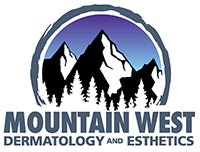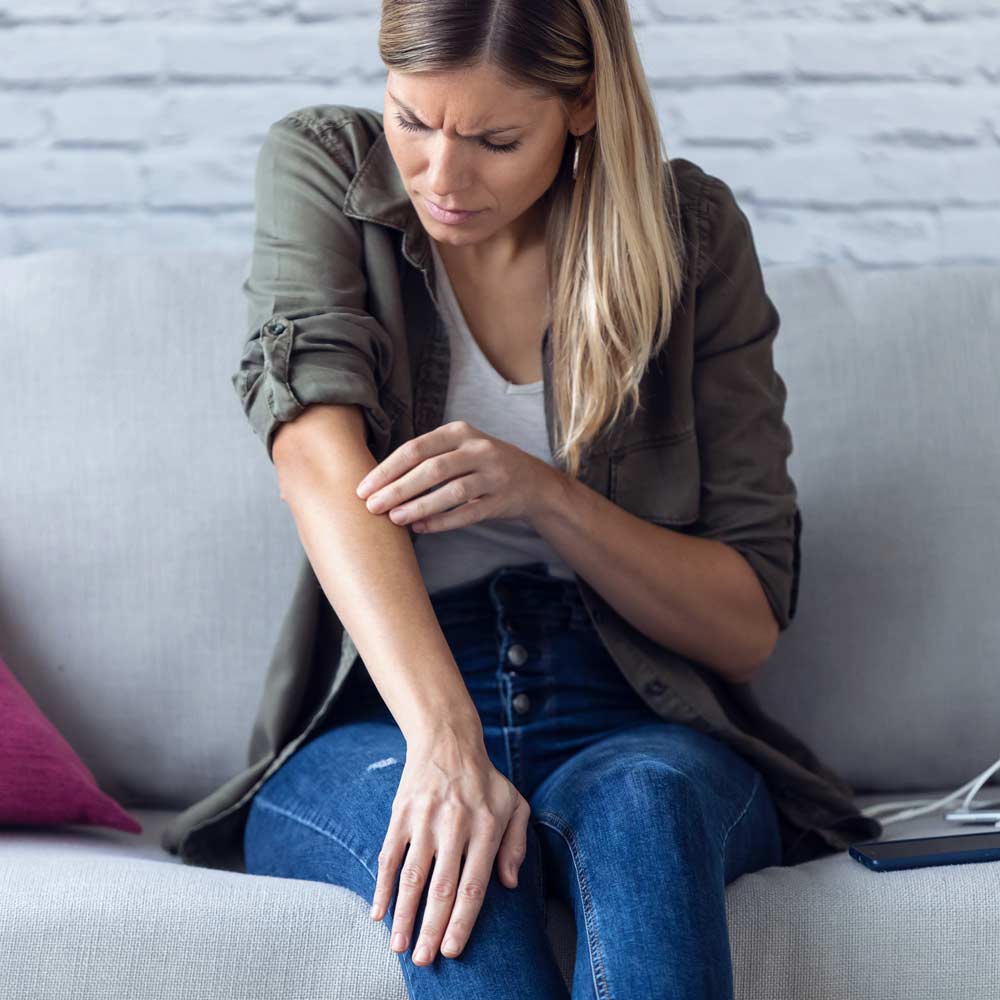Common Skin Diseases and Conditions
Useful Links
- Learn more about Acne
- Learn more about Rosacea
- Learn more about Molluscum Contagiosum
- Learn more about Warts
- Learn more about National Psoriasis Foundation
- Learn more about Skin cancer
Acne
Acne is a common skin condition that affects most teenagers to some extent. However, the condition is not restricted to any age group; adults in their 20’s-even into their 50’s can develop acne.
Acne consists of black heads, whiteheads, pimples and sometimes deeper cysts. It is most common on the face but can also occur on the back, chest, shoulders and neck. When acne is severe, it can lead to serious and permanent scarring. Even less severe cases can be followed by scarring.
Acne is not a disease caused by dirt. The blackness of a blackhead is not dirt, but is due to dried oil and dead skin cells in the openings of the hair follicle.
Sodium Lauryl Sulfate is an ingredient in many shampoo’s that can clog your pores.
Treatment
Each treatment will be tailored to the individual patient.
Improvement will be noticeable in 6 to 8 weeks.
- Wash your face gently two times a day with warm water, your bare hands and the prescribed face wash.
- Topical preparations may be prescribed to help unblock the pores and reduce bacteria. Use only as directed. Avoid using other products on your skin. Avoid hair spray. Use only oil free noncomedogenic make up if necessary
- Oral antibiotics may be prescribed for more severe cases to reduce bacteria in the follicles.
- During your follow up visits Dr. Hinkson may recommend Acne surgery or Acne treatments. These procedures open pimples, remove blackheads, drain cysts or apply an Alpha Hydroxy Acid facial treatment.
- Do not pick, scratch, pop or squeeze your pimples yourself. This may lead to worsening of your condition and permanent scarring.
- Foods do not cause acne but chocolate, nuts, caffeine, fried foods and pop make some patient’s acne flare.
- If you become pregnant stop all prescriptions and notify Dr. Hinkson.
Get a PDF version of The Truth About Acne.
Rosacea
Rosacea is a skin disease that causes redness and swelling on the face. Often, but wrongly referred to as “adult acne,” rosacea may begin with redness in the center of the face that gradually covers the cheeks and chin. As the disease progresses, small blood vessels and tiny pimples begin to appear on the reddened area.
Do’s and Don’ts
- The exact cause of rosacea is still unknown, although studies have shown many factors can irritate the condition.
- Drinking alcohol of any type, spicy foods, hot drinks, coffee, nuts and smoking will cause blood to rush to the affected areas and aggravate flushing. It’s important to note that alcohol may worsen a case of rosacea, although symptoms may be just as severe in someone who doesn’t drink at all. Learn more about the Rosacea Triggers (pdf file).
- Limiting exposure to sunlight, or extreme hot and cold temperatures will help relieve the symptoms of rosacea.
- Rubbing or massaging the face should also be avoided because it will tend to irritate the reddened skin.
Avoiding irritating cosmetics will help prevent redness and swelling.
Treatment Options
- Each treatment will be tailored to the individual patient. Improvement will be noticeable in 4-6 weeks.
- Topical gels, creams or lotions may be prescribed.
- Oral Antibiotics may be needed for more severe cases or for Ocular Rosacea, which manifests with dryness, scratchiness, or watering of the eyes.
- Small blood vessels on the face may be treated with a small electric needle to close them off.
Molluscum Contagiosum
What is it?
Molluscum contagiosum is a fairly common viral infection of the skin, somewhat similar to warts. The growths appear as small, firm, pink bumps with a central indentation.
Who gets molluscum?
The condition is most common in children, although young adults also get it. The presence of severely dry skin or eczema makes a person much more susceptible.
How is it transmitted?
Skin-to-skin contact is the usual mode of transmission. Children often spread the virus over their skin by scratching. Contaminated clothing is probably not an important source of spread.
Is it dangerous?
No. If irritated, the spots can become infected, but this is unusual.
How is it treated?
There is no predictably effective method of treatment. Scraping the growths off works the best, but it hurts. This may not be feasible if large numbers are present. Other in-office treatments include wart medications such as application of acids and liquid nitrogen (freezing). Prescription creams, gels, or lotions may also be used as home therapy. Usually, several treatment sessions are necessary. Treating of dry or irritated skin is very helpful in preventing further spread of the growths.
Warts
What are warts?
Warts are caused by a viral infection of the cells found in the top layer of the skin. The name of this virus is human papillomavirus (HPV). Warts are skin colored and feel rough to the touch.
There are several different kinds of warts.
Hand Warts
These are usually found around the nails, on the fingers and on the backs of the hand. They are more common where skin has been broken and in the areas where fingernails are bitten or hangnails picked.
Foot Warts
These are usually on the soles of feet and are called plantar warts. Plantar warts tend to grow in a group the size of a quarter or larger. Most plantar warts do not stick up above the surface as much as hand warts, because the pressure of walking flattens them and pushes them back into the skin. Often black dots, which are blood vessels that feed the wart, can be seen.
Flat Warts
These are much smaller and are less rough than hand or foot warts. They tend to grow in a great number at any one time. They can occur anywhere, but are most common on the face and legs.
How do you get warts?
Warts are passed from person to person. The time from the first contact to the time the warts have grown large enough to be seen is generally several months. The risk of catching hand, foot and flat warts is small.
How are warts treated?
Treatments options depend on the age of the patient and type of wart. Cryotherapy (freezing) is generally preferred because it is effective and rarely results in scarring. Repeat treatments at 2 – 4 week intervals are often necessary. Other treatments such as cantharidin, podophyllin, electrosurgical destruction, or bleomycin may be used. Adults will benefit from taking Vitamin E 400 IU daily and children will benefit from a daily children multivitamin to help fight the wart virus.
A combination of in-office and at home treatments may be used. The treatment of warts can become very expensive quickly. Because they are viral in nature, one wart may be resolved and another appear.
It is possible that after many treaments, the patient may still have warts.
Psoriasis
Psoriasis can be improved through diet. Read our Psoriasis Diet (pdf) to learn about which foods are benefical and which to avoid.
Here are some helpful links to learn more about Psoriasis and Psoriasis treatments
Pharmaceutical Companies who offer prescription Psorasis treatments
Amgen and Wyeth Pharmaceuticals – Enbrel (r)
Abbott Laboratories – Humira(r)

